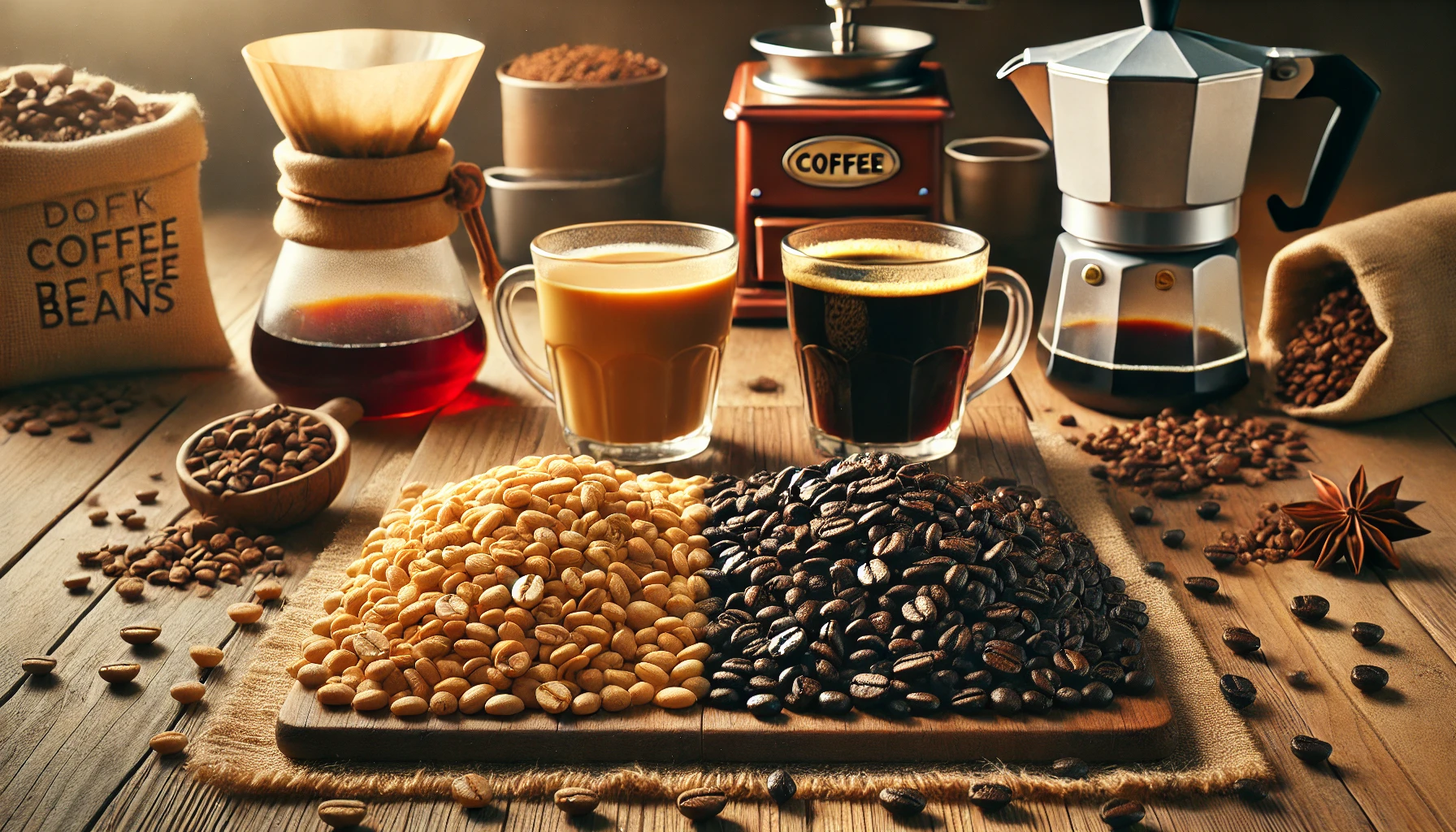If you’ve ever stood in front of a coffee shelf wondering whether to grab a light roast or a dark roast, you’re not alone. The difference between them goes far beyond just color — it affects flavor, acidity, body, and even caffeine content.
In this article, you’ll learn the real differences between light and dark roasted coffee, how each one behaves in your cup, and how to choose the best one for your taste.
What Is a Coffee Roast?
Roasting is the process of applying heat to green coffee beans, transforming them into the flavorful, aromatic beans we brew.
As coffee roasts:
- Moisture is driven out,
- Sugars caramelize,
- Acidity decreases,
- And flavor compounds develop.
Roast level dramatically changes how a coffee tastes — even if it’s from the same origin.
Light Roast: Bright, Fruity, and Complex
Light roasts are roasted for less time, stopping earlier in the roasting process — usually just after the first crack (an audible popping sound that signals the beans are expanding and releasing gases).
Characteristics:
- Color: Light brown
- Surface: Dry (no visible oils)
- Flavor: Fruity, floral, citrusy, sometimes tea-like
- Acidity: High and vibrant
- Body: Lighter
- Caffeine: Slightly more by weight (denser beans)
Ideal For:
- People who enjoy delicate and complex flavors
- Those who want to taste the origin of the coffee (terroir)
- Pour-over, AeroPress, or manual brewing fans
Pro tip: Light roasts shine when brewed with slower methods that highlight subtle notes.
Dark Roast: Bold, Smoky, and Bitter-Sweet
Dark roasts are roasted longer, usually well past the second crack. At this point, the beans begin to develop oils on the surface, and the original flavors of the coffee origin are replaced by flavors from the roast process itself.
Characteristics:
- Color: Deep brown to almost black
- Surface: Oily and shiny
- Flavor: Smoky, bitter, chocolatey, sometimes burnt or nutty
- Acidity: Low
- Body: Full and heavy
- Caffeine: Slightly less by volume (due to expansion)
Ideal For:
- Fans of bold, intense coffee
- Espresso lovers or those who like cream and sugar
- French press, moka pot, or drip coffee drinkers
Pro tip: Dark roasts are more forgiving if your grind or ratio isn’t perfect.
Medium Roast: The Best of Both Worlds?
While not the main focus here, medium roasts deserve a quick mention — they’re often considered the balance point between acidity and body.
- Rounded flavors with caramel or chocolate notes
- Lower acidity than light, but not as bold as dark
- Popular in specialty blends and drip coffee
Light Roast vs. Dark Roast: Head-to-Head
| Feature | Light Roast | Dark Roast |
|---|---|---|
| Roast Time | Shorter (just past first crack) | Longer (after second crack) |
| Flavor | Bright, fruity, floral | Bold, smoky, chocolatey |
| Acidity | High | Low |
| Body | Light | Full |
| Bean Appearance | Dry, light brown | Oily, dark brown |
| Caffeine (by weight) | Slightly more | Slightly less |
| Best Brewing Method | Pour-over, AeroPress | French press, espresso, moka pot |
Which One Should You Choose?
It depends entirely on your personal taste and how you brew your coffee:
Choose Light Roast If You:
- Enjoy complex, fruity, or tea-like notes
- Prefer manual brewing methods like pour-over or Chemex
- Want to explore the unique flavors of different origins
Choose Dark Roast If You:
- Like strong, bold, comforting coffee
- Add milk or sugar (dark roast flavors cut through)
- Use automatic drip machines, moka pots, or espresso machines
Want to experiment?
Try buying the same coffee origin roasted both ways to compare side by side — you’ll be amazed at how different they taste.
Final Roast: Follow Your Flavor
There’s no right or wrong when it comes to choosing a roast. Some days you may crave the brightness of a light roast; other days, the warmth and comfort of a dark roast hits just right.
The more you taste and experiment, the better you’ll understand your preferences — and the closer you’ll get to your perfect cup.
